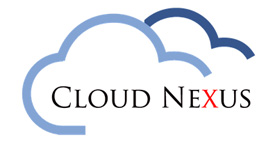Salesforce, a leading cloud-based customer relationship management (CRM) platform, empowers businesses to streamline their processes and enhance customer relationships. At the core of Salesforce’s robust architecture are standard objects, fundamental building blocks that represent various entities and enable the platform’s functionality. In this guide, we’ll delve into each standard object, unraveling their significance and outlining how they contribute to the overall Salesforce experience.
-
Account Object: The Account object serves as the foundation for managing business relationships. It represents companies, institutions, or individuals with whom your organization has a business relationship. Details such as company name, address, and industry are commonly stored here, forming a centralized hub for crucial account information.
-
Contact Object: Complementary to the Account object, the Contact object represents the individuals associated with an account. Whether they are decision-makers, influencers, or key contacts, the Contact object stores pertinent details like names, titles, email addresses, and phone numbers, fostering a comprehensive understanding of your business contacts.
-
Opportunity Object: The Opportunity object plays a pivotal role in tracking potential revenue. It represents a potential sale or deal and includes information such as the deal amount, stage, and probability of closure. Monitoring opportunities provides sales teams with valuable insights into their pipeline and aids in making informed decisions to drive revenue growth.
-
Lead Object: Leads are prospective customers who have shown interest in your products or services but have not yet been qualified. The Lead object in Salesforce allows organizations to capture and nurture leads until they are ready to be converted into Contacts and Opportunities, facilitating a seamless transition from prospecting to deal closure.
-
Case Object: Efficient customer support is crucial for business success. The Case object helps manage customer inquiries, issues, and resolutions. By tracking cases, organizations can ensure timely and effective support, fostering customer satisfaction and loyalty.
-
Campaign Object: Marketing efforts are streamlined through the Campaign object, which represents marketing initiatives such as email campaigns, events, or advertisements. Tracking campaign performance and associating leads and contacts with campaigns enables businesses to gauge the effectiveness of their marketing strategies.
-
Product Object: For businesses dealing with products, the Product object in Salesforce allows for the creation and management of a product catalog. It includes details such as product name, description, and price, providing a centralized repository for product-related information.
-
Opportunity Product Object: Working in conjunction with the Opportunity object, the Opportunity Product object represents the specific products associated with an opportunity. It allows organizations to track individual items or services within a deal, contributing to a granular understanding of deal structures and profitability.
Conclusion: Salesforce’s standard objects form the backbone of the platform, offering a comprehensive and scalable solution for businesses to manage their customer relationships, sales processes, and marketing endeavors. By understanding the distinct purpose of each standard object, organizations can leverage Salesforce to its full potential, driving efficiency, collaboration, and ultimately, business success.
NOV
2023


About the Author:
Experienced technical business analyst recognized for implementing cost-effective solutions, leveraging SFDC development with new and legacy data assets, and providing customized solutions for critical business requirements. Engages with executive leadership, sponsors, and end users to develop and deliver end-to-end enterprise solutions that expedite vital business functions and expand revenue growth. Orchestrates sales solutions with maximum economic impact for businesses; specializing in highly matrixed, global Clinical Research Organizations (CROs).